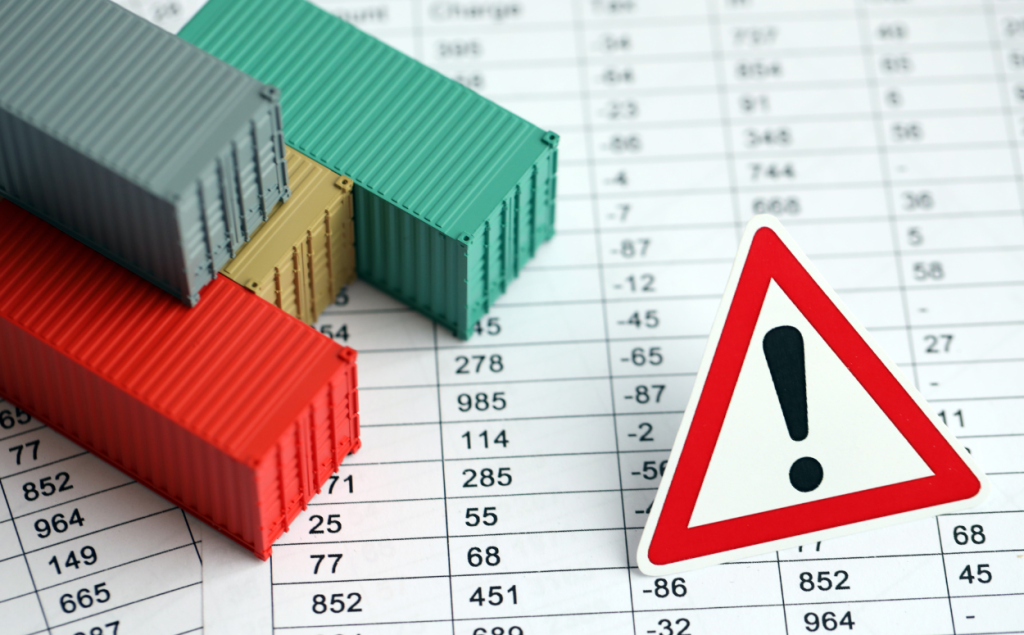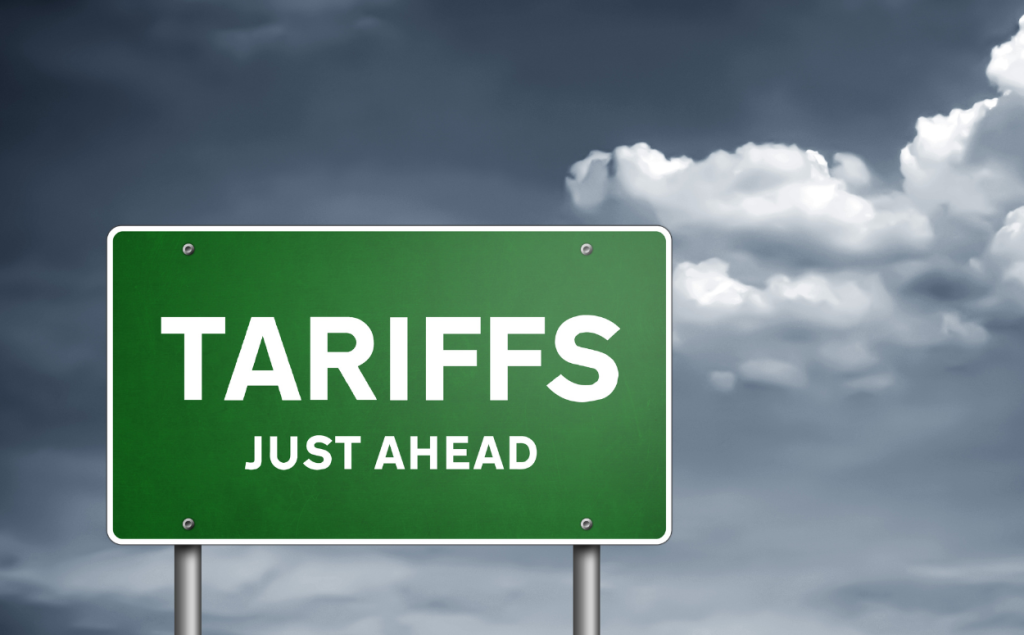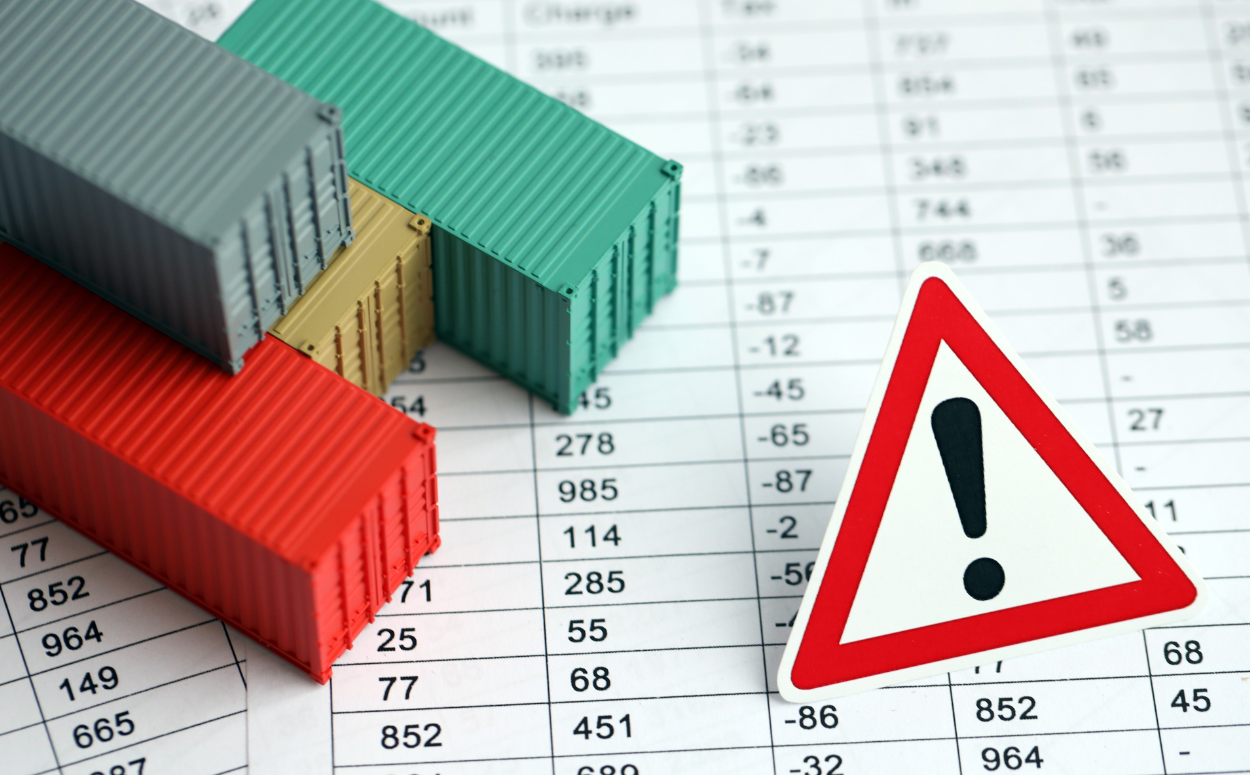Ideal Fulfillment shares that they are making US based fulfillment centers more appealing during the time of tariffs.
In the ever-shifting landscape of global trade, one constant remains: businesses are always looking for the smartest, most cost-effective way to get their products into customers’ hands. For years, many brands—especially e-commerce companies—have leaned on international fulfillment and manufacturing partners to keep costs low and operations lean. But in 2025, tariffs are changing the game, and U.S.-based fulfillment centers are quickly becoming the more strategic choice.
Whether you’re an established brand or a fast-scaling startup, understanding the connection between tariffs and domestic fulfillment is crucial. In this post, we’ll break down the ripple effect tariffs are having on the global supply chain, why more businesses are shifting their logistics operations stateside, and how U.S.-based 3PLs are helping brands stay competitive.

Table of Contents
Tariffs in 2025: What’s Changed?
Tariffs—taxes on imported goods—have always played a role in global commerce. But in 2025, they’ve taken center stage due to:
- Rising geopolitical tensions between the U.S. and major manufacturing hubs like China, Vietnam, and India.
- New “green” tariffs based on environmental impact and carbon emissions.
- Expanded enforcement of origin rules that restrict how brands classify imported goods.
- Higher duties on certain raw materials, electronics, textiles, and components used in popular consumer goods.
These developments have made importing goods into the U.S. more expensive, less predictable, and more complex from a compliance standpoint. For many brands, this has forced a hard pivot: it’s no longer just about manufacturing costs, it’s about total landed cost—and fulfillment is a huge part of that equation.
Why U.S.-Based Fulfillment Is Becoming the Smarter Play
Here’s how tariffs are driving brands to reconsider where they store and ship their products—and why U.S.-based fulfillment centers are now more attractive than ever.
1. Avoiding Last-Mile Tariffs and Duties
Let’s start with the basics: when you import a product into the U.S., you pay tariffs based on its declared value, category, and country of origin. If you store and fulfill from overseas—say, from a warehouse in China or Hong Kong—you’ll pay import duties on each individual item as it enters the U.S. per order.
This is known as Delivered Duty Unpaid (DDU) shipping, and while it might seem cheap on the surface, it can:
- Delay shipments due to customs clearance issues
- Surprise customers with extra duties on delivery
- Add up in costs for every package you send
Switching to a U.S.-based fulfillment model means importing bulk inventory in advance, paying tariffs once, and shipping to U.S. customers domestically. This avoids repeated customs fees and speeds up fulfillment. You gain:
- Predictable costs
- Faster shipping
- No customer complaints about surprise duties
2. Bulk Importing = Tariff Efficiency
One of the smartest ways to handle tariffs is through volume strategy. Rather than shipping goods one-by-one across borders, you can import full containers or pallets into a U.S. warehouse, pay your duties up front, and reduce the total impact of tariffs on your profit margins.
Why? Because bulk shipments benefit from:
- Lower freight costs per unit
- Simpler customs documentation
- Consolidated duties and handling fees
When you fulfill from overseas, every single order is subject to potential delays and costs. Fulfill from the U.S., and you centralize those issues and resolve them in one go. More brands are realizing this is not only faster—but far more cost-efficient in the long run.
3. Greater Control Over Compliance and Classification
Customs regulations are tightening, and the U.S. is cracking down on improper classifications, vague country-of-origin declarations, and incomplete product documentation. When you use international fulfillment centers, you’re relying on third parties—often with language or cultural gaps—to get those details right.
When you work with a U.S.-based fulfillment center, you’re getting:
- Local customs brokers
- Accurate HTS code support
- Proactive classification audits
- Compliance expertise from people familiar with U.S. regulations
This added control can help you avoid fines, delays, and shipment holds—all of which have become more common in today’s post-pandemic, tariff-heavy trade environment.
4. Reshoring and Nearshoring: The Supply Chain is Coming Home
Another major reason U.S. fulfillment is rising in popularity? Brands are increasingly reshoring or nearshoring their manufacturing. Thanks to global supply chain disruptions, geopolitical risks, and rising labor costs in Asia, many companies are moving production to:
- The U.S.
- Mexico
- Central America
With more goods being made closer to the U.S., it only makes sense to store and ship them from within the country. Brands are choosing U.S.-based 3PLs to stay agile, shorten lead times, and maintain tighter control over inventory.
In fact, many brands now view U.S. fulfillment not just as a workaround for tariffs—but as a long-term strategic advantage.
5. Customer Expectations: Speed, Tracking, and Transparency
Let’s not forget what your customers want. They’ve been trained by Amazon to expect:
- 2-day shipping
- Accurate tracking
- No surprise fees
International fulfillment often struggles to meet these expectations—especially when shipments are held up at customs or delayed by global transit issues. U.S.-based fulfillment centers, on the other hand, can offer:
- Same-day processing
- 2–3 day shipping nationwide
- Reliable tracking and delivery
- Lower return costs
For brands focused on customer experience (and retention), this is a big win. Faster fulfillment translates to higher satisfaction, more repeat purchases, and fewer customer service headaches.
6. Tax Advantages and Duty-Free Zones
Another perk of domestic fulfillment? Some U.S. fulfillment centers are located in Foreign Trade Zones (FTZs) or tax-advantaged warehouses, which can reduce the impact of tariffs even further.
These zones allow you to:
- Store goods duty-free until they’re sold
- Repackage or re-label inventory in compliance with U.S. regulations
- Export goods without paying U.S. duties
If you’re shipping internationally or assembling products from multiple parts, working with a fulfillment partner in an FTZ can help you manage your tariff exposure with even greater precision.
7. Domestic Fulfillment Enhances Supply Chain Resilience
If 2020 taught us anything, it’s that global supply chains are vulnerable. Tariffs, port strikes, pandemics, and political instability can all grind international logistics to a halt.
U.S.-based fulfillment centers offer something global fulfillment doesn’t: resilience.
- Shorter transit times
- Fewer touchpoints
- Easier communication
- Lower risk of disruption
By moving fulfillment closer to the end customer, brands are reducing risk and creating a more responsive and adaptable supply chain—one that can pivot quickly if tariffs change again (and they will).
What to Look for in a US Based Fulfillment Centers
If you’re ready to explore domestic fulfillment as a solution to rising tariffs, here’s what to look for in a 3PL:
National Coverage
A 3PL with fulfillment centers in multiple U.S. regions (West Coast, Midwest, East Coast) can help you reduce shipping times and costs.
Tariff and Compliance Expertise
Choose a partner that understands customs, classification, and trade law. They’ll help you avoid unnecessary fees or compliance headaches.
Scalable Solutions
Look for a fulfillment partner that can grow with you—from startup to enterprise, without huge jumps in cost or complexity.
Tech Integration
Modern U.S.-based 3PLs should offer real-time inventory tracking, automated order processing, and analytics dashboards that help you make smarter decisions.
Experience with Reshoring/Onshoring Brands
If your supply chain is evolving, you want a partner that understands how to support dynamic sourcing and production models.
Tariffs Are a Wake-Up Call—Domestic Fulfillment Is the Answer
The global trade landscape is evolving rapidly, and tariffs are no longer just a manufacturing concern—they’re shaping every aspect of fulfillment, logistics, and customer experience. For many brands, the solution is clear:
Bring fulfillment closer to home.
By partnering with U.S.-based fulfillment centers, you gain:
- More predictable costs
- Better compliance and control
- Faster shipping to customers
- Reduced tariff impact
- A more resilient supply chain
At Ideal Fulfillment, we help brands navigate this new landscape by offering flexible, transparent, and scalable US based fulfillment centers. Whether you’re transitioning from international fulfillment or starting from scratch, our team is here to help you reduce costs, improve delivery speed, and minimize the impact of tariffs on your bottom line.
Want to talk about how a domestic fulfillment strategy could transform your business? Let’s chat.

